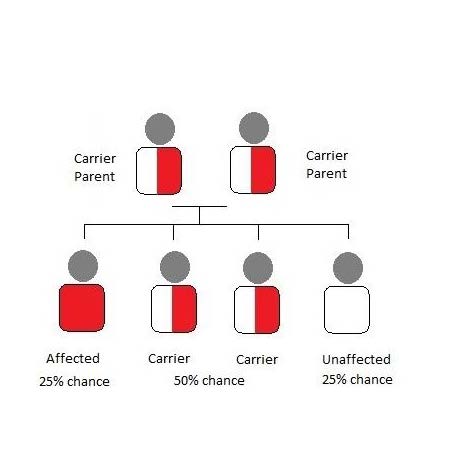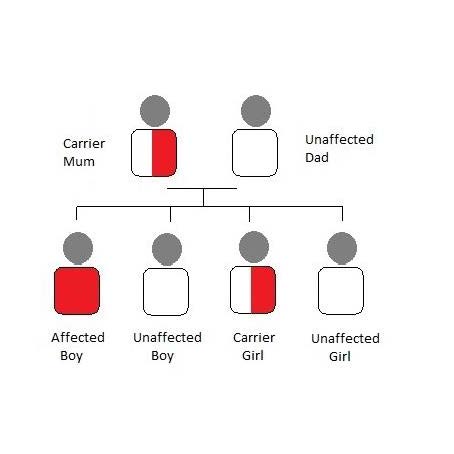What is Reproductive Carrier Screening?
Reproductive carrier screening is used to identify individuals and/or couples that may be at increased risk of passing on certain genetic conditions to their children. It involves testing healthy individuals who are planning a pregnancy or in the early stages of pregnancy to see if either parent carries a genetic variation that might cause a serious genetic condition in their child. If you do carry a genetic variation you are said to be a carrier of that condition. Being a carrier of one of these conditions often has little or no impact on an individual’s own health but can have a significant impact on their children. Most couples who have a child with one of these genetic conditions do not have a family history of these conditions and did not know that they were at increased risk of having a child with one of these conditions.
Who needs reproductive carrier screening?
Recently published guidelines from both The Royal Australian and New Zealand College of Obstetricians and Gynaecologists (RANZCOG) and the Human Genetics Society of Australia (HGSA) recommend that all women be offered carrier screening either before getting pregnant (ideally) or early in pregnancy. The decision to have carrier screening is a personal one and screening is completely optional.
What are genes and genetic conditions?
Humans are made up of billions of cells. Typically, each cell contains 23 pairs of chromosomes (or a total of 46 chromosomes). One copy of the pair is inherited from the mother and one copy is inherited from the father. These chromosome pairs are labelled 1 to 22 with the 23rd pair being either XX (female) or XY (male).
Our chromosomes are made up of about 23,000 pairs of genes. Genes are segments of DNA within the chromosomes. Our genes tell the body how to grow, develop and function. We all carry variations within our genes which makes each of us unique. However, some variations (also known as mutations) can disrupt how that gene works and as a result can have an impact on our own or our children’s health. When these variations impact a person’s health we say that they have a genetic condition. Examples of genetic conditions include Cystic Fibrosis and Thalassaemia.
Genetic conditions are inherited in different ways depending on the condition. The conditions that are screened for using reproductive carrier screening are inherited in an Autosomal Recessive or X linked manner.
Autosomal recessive inheritance:
Typically, we each have two working copies of a gene. A carrier of an autosomal recessive condition will only have one working copy of that gene. However, as the other copy is functional that individual is usually healthy. The faulty gene (or gene that carries the variation) may be passed down in families for many generations without being detected. However, if two carriers happen to have a child together then there would be a risk of a child with two faulty copies of the gene and therefore that child would have that genetic condition. If both parents are carriers in each pregnancy, there is a 1 in 4 risk of having a child with that genetic condition.

X-linked inheritance:
These conditions are caused by gene changes on the X chromosome. Typically, males are XY and females are XX. For X-linked conditions the sex of the parent who passes on the gene variation influences the risk for the children.
If the father has the X linked condition, he passes on the faulty gene to his daughters. Provided that the mother is not also a carrier all his daughters will be healthy carriers.
If a mother is a carrier of an X-linked condition, they would have a faulty gene on one of their X chromosomes. If they were to pass on this faulty gene there is a 50% chance that each son (XY) they conceive would be affected by the condition. There is also a 50% chance that the faulty X chromosome would be passed onto their daughter. Females are usually unaffected or less severely affected by X-linked conditions as they have another working X chromosome. However, they can pass on the faulty X chromosome and have an affected son. Fragile X syndrome is an example of an X linked condition.

If mum is a carrier there is a there is a 1 in 2 risk of having a boy with that genetic condition.
What testing options do I have?
There are many laboratories that offer different forms of carrier screening. Specialist Women’s Ultrasound recommends either:
Prepair 3 Carrier Screening
Prepair 3 screens for Cystic fibrosis, Spinal Muscular Atrophy and Fragile X syndrome. Testing can be performed pre-pregnancy or during early pregnancy ideally before 12 weeks gestation. Results generally take 2-3 weeks to return. Testing is performed in Melbourne. Typically, the female partner is screened first. Partner testing can be arranged should the first partner be a carrier. Testing may be via saliva or blood samples. For those who meet the Medicare criteria this may be bulk billed.
OR
Expanded Carrier Screening
Prepair 500+ or 1000+. Expanded carrier screening screens couples for hundreds of different conditions. Testing can be performed pre-pregnancy or ideally before 12 weeks gestation. Results generally take 5-6 weeks to return. This is a couple based test and samples are collected from both the male and female reproductive partner at the same time. This testing is not bulk billed. For the latest pricing information please see the VCGS website.
Further information about reproductive carrier screening can be found on the VCGS website
What do my results mean?
The results will either identify that you are a carrier of a particular condition or will return as low risk. If you are found to be a carrier further partner testing may be necessary. Results and risks for future pregnancies/current pregnancy will be made available.
A low risk result means that it is unlikely that you are a carrier however it cannot completely exclude this as a possibility. There is a residual carrier risk for all conditions tested.
What if both partners are found to be carriers? If both reproductive partners are found to be a carrier there are a lot of different options available. Your genetic counsellor will discuss the different options available depending on your own individual circumstances.
Options include:
• Conceiving a pregnancy using in vitro fertilisation (IVF) and preimplantation genetic testing (PGT). Genetic testing is performed on embryos and only embryos which are not affected would be implanted.
• Using a sperm or egg donor. A pregnancy can be conceived using either a donor egg, sperm or both.
• Getting pregnant naturally and testing the pregnancy using CVS or amniocentesis.
• Getting pregnant naturally and testing the baby after birth.
• Not having biological children
I’m having NIPT during my pregnancy, are the tests the same?
Carrier screening and NIPT are different tests and look at different conditions. There is no crossover between tests.
Do I need to do a carrier screen in every pregnancy?
No. As the testing looks at your carrier status you do not need to have carrier screening repeated every pregnancy. If however you are having a child with a new reproductive partner/IVF donor or if a family member has been found to have a genetic condition or found to be a carrier of a genetic condition get in contact with your Genetic Counsellor/Doctor as your risk may change and further testing may be required.
How do arrange this test or get more information?
Phone Specialist Women’s Ultrasound on 9898 9055 and book a carrier screening appointment with our Genetic Counsellor. During this appointment our Genetic Counsellor will review your family history and discuss the different carrier screening options that are available. If you decide to pursue carrier screening samples may be collected on the day. Our Genetic Counsellor will discuss any results in detail with you and communicate them to your Doctor.

